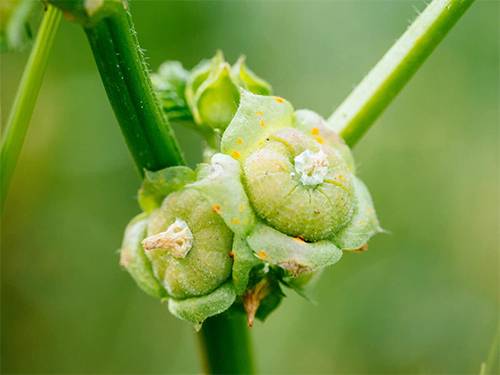Long valued in herbal remedies across Europe, Asia, and the Middle East, mallow leaves are packed with vitamins, minerals, and unique compounds that promote overall well-being. Known for their soothing, anti-inflammatory, and antioxidant effects, they’ve been used for centuries to treat everything from digestive discomfort to skin irritation.

Today, modern science is confirming what ancient healers already knew: the humble mallow leaf is a nutritional and medicinal powerhouse worth adding to your wellness routine.
Soothing digestive aid
Common mallow leaves are rich in mucilage, a gel-like substance that coats and protects the lining of the digestive tract. This makes them especially effective in soothing stomach irritation, gastritis, acid reflux, and irritable bowel syndrome. When consumed as a tea or extract, mallow helps calm inflammation, ease indigestion, and promote a balanced gut environment.
Natural anti-inflammatory agent
One of the most remarkable properties of mallow leaves lies in their anti-inflammatory action. Thanks to their high concentration of flavonoids and polyphenols, they help reduce swelling and pain associated with conditions like arthritis and muscle soreness. Regular consumption or topical application can help alleviate chronic inflammation, supporting joint and tissue health naturally.
Boosts immune health
Mallow leaves provide a natural immune boost thanks to their abundance of vitamin C, vitamin A, and powerful antioxidants. These compounds strengthen the body’s defenses against infections, neutralize harmful free radicals, and support faster recovery from illness. Adding mallow to your diet can help maintain year-round immune resilience.
Supports the respiratory system
For centuries, mallow leaves have been used as a remedy for coughs, bronchitis, and sore throats. The plant’s mucilage helps coat the throat, reducing irritation and suppressing dry or persistent coughing. Drinking mallow tea can help ease breathing difficulties and promote respiratory comfort during colds or seasonal allergies.
Promotes urinary tract health
Common mallow acts as a gentle diuretic, encouraging the elimination of toxins and excess fluids from the body. This natural cleansing process helps maintain kidney health and may reduce the risk of urinary tract infections and kidney stones. For those looking to detoxify naturally, mallow tea is a safe and effective option.
Enhances skin care and healing
When applied to the skin, mallow leaves have soothing, antibacterial, and anti-inflammatory properties that make them ideal for treating eczema, psoriasis, and minor wounds. The plant’s natural extracts support skin regeneration, reduce redness, and help restore a healthy complexion. Mallow-infused creams or poultices can provide lasting relief for dry or irritated skin.
Supports heart health
The phytonutrients found in common mallow leaves may contribute to better cardiovascular health by improving circulation, lowering bad cholesterol (LDL), and supporting healthy blood pressure levels. These benefits help reduce the risk of heart disease and enhance overall cardiovascular function.
Packed with essential nutrients
Mallow leaves are nutrient-dense, offering a natural source of iron, calcium, magnesium, and potassium. These minerals are crucial for maintaining bone density, muscle performance, and overall energy levels. Regularly consuming mallow as part of your diet helps ensure your body gets the nourishment it needs to thrive.
Shows anti-cancer potential
Emerging studies suggest that phytochemicals in mallow leaves may help prevent abnormal cell growth, hinting at potential anti-cancer properties. Although research is still in early stages, the plant’s antioxidants and polyphenols may play a role in protecting the body from oxidative damage linked to cancer development.
Aids in weight management
Common mallow leaves are low in calories but high in fiber, making them a great addition to a balanced diet. The fiber content helps promote fullness, control appetite, and support healthy digestion—all key factors for effective weight management. Drinking mallow tea or adding the leaves to meals can help you stay satisfied and energized.
How to use common mallow leaves
Culinary uses: The tender leaves are edible and can be added to salads, soups, and stews. They have a mild, slightly sweet flavor that blends well with other greens. Sautéed mallow leaves with olive oil and garlic make a nutritious side dish, while adding them to smoothies boosts their nutrient content.
Tea preparation: To make a soothing herbal tea, steep one to two teaspoons of dried mallow leaves in boiling water for 10 minutes. This beverage helps relieve sore throats, calm the stomach, and support immune function.
Topical applications: For skin conditions or wounds, apply crushed fresh leaves as a poultice or use creams containing mallow extract. The soothing compounds help reduce inflammation and promote healing.
Integrating mallow into your health routine
Before incorporating common mallow into your daily wellness plan, consult your healthcare provider—especially if you are taking medication or have a medical condition. When used responsibly, mallow can complement both traditional and modern health approaches, offering gentle yet effective support for your body’s natural balance.

Common mallow is more than just a wild herb—it’s a green marvel of natural healing. Whether you sip it as a tea, add it to meals, or apply it to your skin, this versatile plant can enhance your health from the inside out. Embrace the power of nature and let common mallow be your next step toward holistic wellness.












Yorumlar
Kalan Karakter: